Compounding Catastrophe: The Impact of Humans on Natural Disasters
The dual forces of global warming and poor human management choices regarding land and water resources combine to cause ‘natural’ disasters, and poor planning and preparation exacerbate the level of damage experienced,” explains the United States Agency for International Development (USAID). USAID is just one of many worldwide organizations sounding a wake-up call to humanity regarding its need to coexist within the parameters that Earth sets forth — parameters subject to an unstable, sometimes threatening and always evolving environment. For example, the United Nations’ Intergovernmental Panel on Climate Change (IPCC) outlines that global warming is ‘morphing’ previously understood weather systems, which are causing an increase in natural disasters. This effect is an international problem because, as the IPCC describes, “. . . where extreme weather events become more intense and/or more frequent, the economic and social costs of those events will increase and spread from directly impacted areas and sectors to other areas and sectors through extensive and complex linkages.” Fortunately, if humans become proactive, a “least-cost” approach that makes full use of science and the wide range of tools, methods and technologies now available can mitigate the devastation resulting from natural disasters.
Natural disasters, which include landslides, avalanches, droughts, wildfires, floods, tsunamis, volcanic eruptions, tornados, earthquakes and hurricanes, can devastate humans. Between 1974 and 2003, 6,367 natural disasters occurred globally and resulted in more than 2 million reported deaths. Overall, more than 5 billion people were affected; 182 million were left destitute and homeless; and estimated damages totaled U.S. $1.38 trillion, concludes Prof. Debarati Guha-Sapir, Ph.D. and Director, World Health Organization’s (WHO) Center for Research on the Epidemiology of Disasters (CRED). Guha-Sapir, et. al., in Thirty Years of Natural Disasters 1974-2003: The Numbers, provides a human face to the bleak statistics by saying, “. . . these figures may seem very high, but they are probably underestimates . . . Such large numbers may appear abstract and difficult to conceptualize; but they are a harsh reality for families who have lost loved ones, had their homes reduced to rubble or watched their investments destroyed by natural disasters.” In the United States alone, 78 ($1 billion) weather-related natural disasters produced more than $600 billion of destruction between 1980 and 2007, according to the National Oceanic and Atmospheric Administration (NOAA).
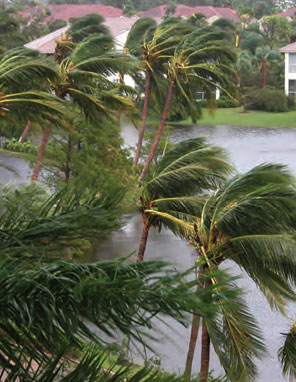
© iStockphoto.com/ArtBoyMB
Many believe the human role in natural disasters is passive — relegated to being a victim of nature. But scientists and engineers are beginning to understand the impact of disregarding land use planning and protection systems that could save lives, families, homes and communities. “Societal factors are very important to shaping trends in damage related to hurricanes,” concludes Roger Pelke Jr., a senior scientist with NOAA’s National Center for Atmospheric Research. Pelke and other researchers have observed an upward trend in damages clearly evident in the past 100 years of hurricane activity. He advises, “As people continue to flock to the nation’s coasts and bring with them even more personal wealth, losses will continue to rapidly increase.” U.S. Census Bureau statistics indicate that coastal counties are now home to 53 percent of the population and will rise to 75 percent by the year 2020 if trends continue. Indeed, the IPCC purports, “Coasts are projected to be exposed to increasing risks, including coastal erosion, due to climate change and sea level rise. (See this issue’s Climate Change Report.) The most vulnerable industries, settlements and societies are generally those in coastal and river flood plains . . . especially where rapid urbanization is occurring.”
“Coastal zone management is a major effort within the federal government to get people to look at where they’re living and building and recognize what the future’s going to look like with sea level rise and coastal erosion. Unfortunately, I think the current understanding of coastal erosion is very localized. Typically what happens is that people don’t start to worry about it until there’s a disaster. Authorities need to zone these areas properly so people don’t just continue to pile into them,” says Major General Don T. Riley, Deputy Chief of Engineers and Deputy Commanding General of the U.S. Army Corps of Engineers (USACE).
The Importance of Understanding Risk
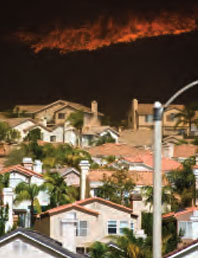
© iStockphoto.com/F00sion
“Risk abounds everywhere,” states Brigadier General John McMahon, Commander of the USACE South Pacific Division. “It boils down to a matter of not ‘if’ but ‘when.’” McMahon also insists: “Public safety is of paramount concern and something we need to pay attention to as it pertains to the risky environment in which we live. We can never eliminate all of the risk that is around us, and this is especially true when we consider flood risk. Even with efforts to reduce risk, there are potential consequences. For example, if we build a new levee, we’re creating an opportunity for some people, developers in particular, to come in and build homes because there’s an idea that we’ve staved off some risk. People need to think through the ‘what ifs’ more. What if a flood comes? What if more rain and snowmelt occur overpowering the capacity of the flood protection system to contain or control the flood? Or worse, what if a levee breaks, or overtops, and subsequently fails?”
Gerald E. Galloway Jr., P.E., Ph.D., a Glenn L. Martin Professor of Engineering and Affiliate Professor at the School of Public Policy, University of Maryland, College Park, is an expert in the field of water and flood management. He worked on the 1993 Great Mississippi Flood White House study and has testified before Congress repeatedly. He warns, “If we had done what we were supposed to do when we identified some of these problems 10 years ago, New Orleans wouldn’t have happened. And we wouldn’t have some of these other issues we now face.”
McMahon adds: “The IPET Report of Hurricane Katrina (see this issue’s Cover Story) emphasized the need to better understand and communicate the risk of living in flood plains and behind levees. People need information because important personal and public policy decisions are at stake. What’s acceptable risk? How much are people willing to invest for higher levels of protection? Who pays and how? What’s environmentally sustainable? How do levee improvements in one community affect flood risk for those up and downstream?”
Galloway agrees and points out that protection systems are not fail-safe. He cautions: “. . . we shouldn’t put people in harm’s way when it is not necessary. Don’t develop areas in the flood plain that are currently undeveloped and cause people to be at risk. There’s a residual risk if you live in the flood plain. If you’re protected by a levee or a floodwall, there’s always a possibility that it will overtop or collapse. No matter how well you build it, we don’t know years from now what the money situation will be or whether anyone will maintain it.”
The Flood Plains of California’s Central Valley
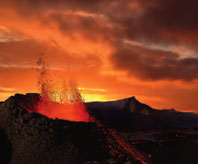
© iStockphoto.com/JulienGrondin
The Central Valley of California is considered by many experts to be the next major catastrophic disaster waiting to happen. Rapidly expanding urban centers in this area lie in two major rivers — flood plains — the Sacramento and the San Joaquin — as well as near other rivers and tributaries that drain from the Sierra Nevada Mountains. Galloway chaired a 2007 Independent Review Panel assessing flood risk in this Valley which estimates “potential direct flood damages in the Sacramento area alone exceed $25 billion.” He describes his ideology about high-risk areas: “One of the fathers of flood management, Gilbert White, once said ‘Floods are natural events. Flood damages are human events.’ Nature has the right to the flood plain, and we choose to interpose ourselves in its way.”
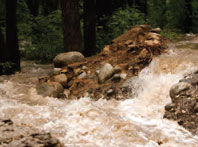
© iStockphoto.com/ChrisCrafter
As a prime example, Galloway and other experts contend that the current flood control system of the Central Valley of California is incapable of dealing with the threat of severe weather events. McMahon concurs: “A lot of the levees that supposedly protect us in the Central Valley are non-engineered levees that have been created as sediment flowed down our river system as a result of hydraulic mining that went on in the foothills of the Sierra a hundred years ago. Sand and other poor quality materials were stockpiled along the banks of our rivers which allowed water to flow down the river freely and keep the river clean. There are well understood consequences with all of the development that has occurred behind these non-engineered levees. We have a big problem with the falsehood of being protected by levees that were not necessarily engineered.”
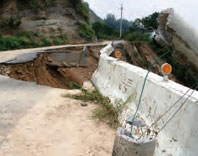
© iStockphoto.com/dannyzhan
In addition, many residents don’t realize that the majority of levees are maintained privately or by non-federal agencies. Galloway explains: “As a matter of fact, the minority of levees are operated by the federal government . . . and the challenge is that everyone underestimates what it takes to take care of a levee. The levee is essentially a pile of dirt. If it’s a good levee, it’s a carefully placed and compacted pile of dirt. Even with that, the higher the levee gets and the heavier it becomes, the more probable that you will have subsidence — areas where it’s going to dip down and create a low spot. You have places where some of the soil isn’t going to be very good; animals burrow in it; people put trees in it; all of these things compound to make it a hazard. I was in charge of some major levees on the Mississippi River, and those are primarily maintained by the federal government. Those levees are huge, carefully watched, guarded and maintained because they have the adequate support to do it. But, most places don’t have that support, and that’s the problem California is struggling with right now . . . Altogether we’re dealing with a system where there’s a great deal of uncertainty as to its integrity.”
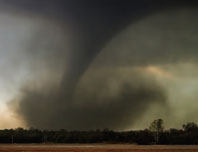
© iStockphoto.com/clintspencer
Galloway points out that in parts of the Sacramento area “the levees don’t provide more than 33-year protection . . . a 100-year protection means that you have a one in four chance of a levee being overtopped within the life of a 30-year mortgage; that’s not very good.” Of course, natural resources and available economics dictate protection levels. Galloway elaborates: “What has happened over time is that when we began to cost-share the construction or upgrade of levees between the locals and the federal government, the locals didn’t want to invest so heavily, not understanding what the difference between a 500– and 100-year protection level was. California has legislated that new levees have to be at the 200-year level; however, it’s going to take a while to get there because some have to get up to the 100-year level first.”
“We’re dealing with the California levee system on a project-by-project basis, and we’re applying the lessons learned from the IPET and the Hurricane Chronology. As a result, we’ve generated a lot of public angst that we’re being too harsh because we came out with a much more deliberate approach but a stronger approach. The highest level of flooding in New Orleans was about 10 feet, but the highest level of flooding in the areas north of Sacramento will be about 23 feet if the levees break. It’s very serious so we’re setting standards, very clear standards. We’re clarifying those standards, and we’re going to hold people to them,” remarks Riley.
Assuming Personal Responsibility
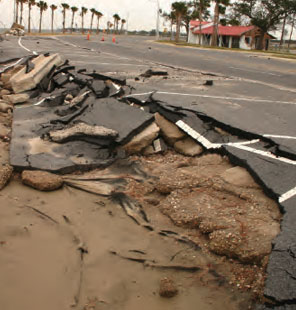
© iStockphoto.com/Genericamerican0
“Building levees to the standard flood protection level is important, but it has to be accompanied by land use planning and evacuation planning, not developing new areas in the flood plain, as well as by requiring flood insurance. People who live in the flood plain are at risk. But, the challenge that we’ve had in this country is that when flooding occurs, the federal government tends to come in, provide some high level of economic support and do a great deal to take care of the people, whether or not they carry insurance. So it’s a disincentive for people to buy flood insurance. We’re still finding very low penetration rates on such insurance, though it’s mandatory for people with mortgages insured by a federal agency. By not getting flood insurance, people are not assuming personal responsibility for their property,” explains Galloway.
Riley concurs: “People need to take personal responsibility for where they live and work and not put that responsibility on the federal government. A levee could be part of the solution as could coastal protection, insurance, evacuation planning, coastal zoning, building codes — any or all of those. You start with the high risk, and then you take these other steps to buy down your risk. And the public is responsible for doing this as citizens. In other words, if you buy a house on the coast, you’re responsible for the risk of doing that. We had a good response to this when we articulated the risk in New Orleans. One reaction that we got was “Now that you told us what our risk is, we can no longer blame it on the federal government.” I thought that was a wonderful reaction. That’s exactly what we’re trying to achieve — to get everyone so well informed that they take personal responsibility for their own risk.”
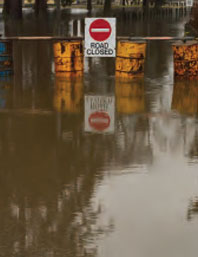
© iStockphoto.com/tillsonburg
McMahon also stresses this critical issue by saying “Most of us own homes as the investment of a lifetime; and to own a home behind a levee, in a flood plain or on the shore and not protect it with flood insurance is really playing Russian Roulette with one’s greatest investment. Yet, I sometimes need to remind my own staff that they should buy flood insurance. The consequences are ‘out-of-sight, out-of-mind’ until disaster strikes. People inherently underwrite risks when they ignore them and do nothing. People need to participate in the process by voting for officials who understand, communicate and appreciate the situation and by supporting bonds and investments that maintain and improve flood defense systems. Levees are just one of the components of our natural infrastructure that haven’t received enough attention in the past several decades. We cannot continue to operate on a reactive basis. These are large national policy questions; Congress and the administration will need to decide where to invest, how to invest, over what timelines to invest and in what infrastructure systems, to make us whole again.”
USAID agrees with McMahon’s, Galloway’s and Riley’s wake-up calls on all fronts. “To adapt to and mitigate natural disasters, climate variability and global climate change . . . managers must work on many fronts to ensure that economic and land-use policies and conditions are in place to guide appropriate private sector investment and resource use patterns. Inappropriate land-use zoning and perverse subsidies for disaster insurance must be replaced with measures and incentives to promote risk and vulnerability reduction and the restoration of healthy ecosystems.” Planning for a sustainable future requires a change in our current patterns and processes. By enacting new policy, requiring new standards and increasing education and communication on this vital topic, America and other nations can begin to mitigate the effects of natural disasters and, quite possibly, significantly reduce the death tolls, economic losses and environmental damage sure to come in this unstable, sometimes threatening and constantly evolving environment called “Earth.”




























